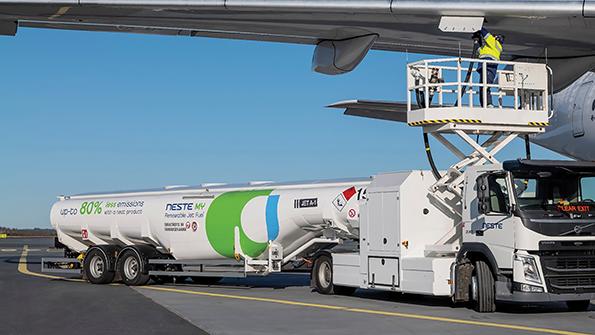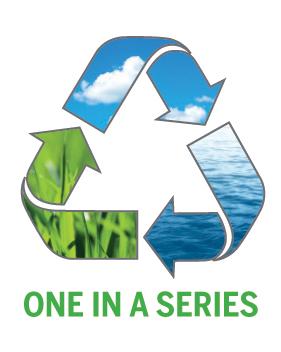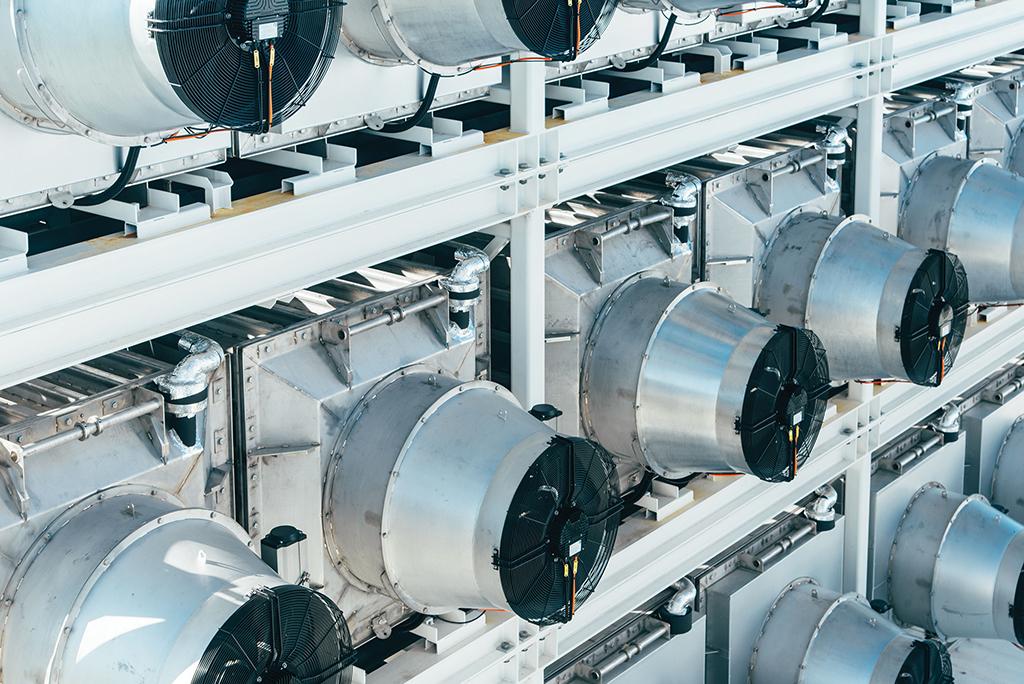
 Urgency is growing behind the need to scale up production of sustainable fuels if aviation is to meet its climate targets. As more countries and their aviation industries commit to net-zero emissions by 2050, they are putting low-carbon fuels on the critical path to achieving that goal.
Urgency is growing behind the need to scale up production of sustainable fuels if aviation is to meet its climate targets. As more countries and their aviation industries commit to net-zero emissions by 2050, they are putting low-carbon fuels on the critical path to achieving that goal.
The scale-up challenge is enormous. Barely 0.01% of the 96 billion gal. (364 billion liters) of jet fuel consumed by the world’s airlines in 2019 was sustainable aviation fuel (SAF). But announced projects should boost production from just 60 million gal. in 2020 to 1 billion gal. per year by 2025, says the Commercial Aviation Alternative Fuels Initiative (CAAFI). And unannounced projects could add another 1 billion gal. per year, taking the industry close to its target of increasing SAF use to 2% by 2025, the International Air Transport Association (IATA) says.
- Europe’s sustainable fuel initiative is pending
- Biden administration is expected to act on SAF
Released in September 2020 by the cross-industry Air Transport Action Group (ATAG), the Waypoint 2050 sustainability blueprint identifies three scenarios for how the aviation industry can meet its goal. In all of them, SAF is essential. The most aggressive SAF deployment scenario would need 116-151 billion gal. per year of SAF production by 2050. Even the most aggressive fielding of electric and hydrogen propulsion technologies would still require 62-90 billion gal. per year.
And that is just to meet aviation’s aspirational goal of halving its net CO2 emissions by 2050, from 2005 levels. While that target is in line with the Paris Agreement goal to limit global temperature rise to well below 2C (35.6F), aviation will have to make even more aggressive cuts in carbon emissions if it is to help achieve the preferred target of 1.5C. That path could require global aviation to reach net-zero emissions by 2050 and demand another 38 billion gal. per year of SAF production capacity, says ATAG.
Identifying the rapid and global scaling up of SAF as “perhaps the single largest opportunity to meet and go beyond the industry’s 2050 goal,” Waypoint 2050 concludes aviation will likely need 150-170 billion gal. per year by 2050. The report recommends airlines “make substantial and bold SAF offtake agreements at an early stage,” governments prioritize aviation as a user of alternative fuel and the energy industry “demonstrate substantial commitment to sustainable aviation fuel production and scale-up.”
The message from ATAG’s study is repeated across regional reports. The Destination 2050 decarbonization road map unveiled in February by the European aviation sector charts a course to net-zero emissions by 2050 that calls for the lion’s share of reductions (46%) to come from SAF. Necessary actions identified by the report include a coherent long-term policy framework, an EU-wide blending mandate and the ability to use 100% SAF in aircraft, up from the current 50% blend limit.
Looking more locally, the UK aviation industry’s February 2020 commitment to achieve net-zero carbon emissions by 2050 set specific targets for SAF production—14 plants producing 1.3 billion gal. per year by 2035, with the output set to increase to 5.7 billion gal. per year by 2050. To provide an initial boost to the sector, the report called on the UK government to provide £500 million ($698 million) in funding over five years, matched by industry, to support construction of first-of-kind commercial plants.
The story is being repeated globally. In January 2020, France released a road map to replace 2% of jet fuel with SAF by 2025 and 5% by 2030, with the objective of reaching 50% by 2050. In September, Germany published a draft law requiring airlines to use 1% SAF by 2028 and 2% by 2030—but only “power-to-liquid” synthetic fuels produced using renewable electricity and captured CO2.
Some countries have taken action. In January 2020, Norway introduced the first SAF blending mandate. It calls for just 0.5% initially but targets 30% SAF by 2030. Sweden followed with a mandate beginning at 0.8% in 2021 and increasing to 27% by 2030. Denmark, Finland, the Netherlands, Spain and others are expected to follow. This trend of local action worries the aviation industry, which wants a global approach.
Having introduced its Corsia carbon offsetting scheme to enable carbon-neutral growth in international flying from 2021, a scheme under which SAF can reduce an airline’s obligations, the International Civil Aviation Organization (ICAO) is now working to define a long-term goal for CO2 reductions. This approach is looking across technology, operations and fuels and will be presented to the ICAO Assembly in 2022.
Against this background, ATAG has started analyzing what needs to be done over the next 10 years to achieve what the industry ultimately sets as its target. The deep dive will look at how many SAF production facilities are needed and where. Results will be used to brief governments, the energy industry and finance community on the required next steps in scaling up SAF.
Some regions and airlines may decarbonize faster than others, says Michael Gill, executive director of ATAG. But, through a combination of technology, operations and SAF, “we think with the right policy and technology advances we can potentially look to net-zero aviation on a global basis by 2060-65,” he says.
The market has already started to move in the right direction, with more producers, politicians, airlines and their customers getting involved in scaling up SAF.
One trend in 2020 was a shift of the limited SAF supply to cargo airlines as the pandemic hit passenger operations. Shell Aviation began supplying SAF from World Energy to Amazon Air in the U.S. and from Neste to DHL Express at Amsterdam’s Schiphol Airport. Atlas Air conducted a test flight, and Air France KLM Martinair Cargo introduced a program enabling shippers and forwarders to book flights using a percentage of SAF.
Also, 2020 saw an uptick of interest in Asia, with All Nippon Airways (ANA) signing a contract with Neste for SAF supply at Tokyo’s Haneda and Narita airports. And Japan Airlines conducted the first commercial flight with SAF produced in Japan, using a fuel made from discarded cotton clothing.
Airlines also involved their customers. Microsoft purchased SAF credits from SkyNRG for employee flights on Alaska Airlines, and Deloitte signed a contract with Delta Air Lines for corporate travel using SAF from Neste. The deals echo the corporate biofuel program pioneered by KLM and SkyNRG.
But the steady flow of news in recent months has come from the fuel producers. They have been encouraged by developments such as the inclusion of SAF under ICAO’s Corsia scheme and low-carbon fuel standards in place in California and Oregon and under consideration in other U.S. states as well as Canada.
One of the more significant moves was LanzaTech’s decision in June 2020 to spin off SAF producer Lanza-Jet. LanzaTech converts industrial waste gases into ethanol, and Lanza-Jet upgrades ethanol to SAF using an alcohol-to-jet (ATJ) process. In February 2021, British Airways (BA) announced an investment in LanzaJet and an agreement to take fuel from its first commercial plant in the U.S., with deliveries beginning in late 2022.
LanzaJet, in which ANA is already an investor, has an aggressive plan to have four plants operational by 2025 producing 100 million gal. per year of SAF. These will not include a potential UK plant to be planned under the BA deal, says LanzaJet President Jimmy Samartzis, or the EU-supported Flite project to build a precommercial ATJ plant in Europe to be operational by 2024.
“I feel we have to bend the curve as quickly as possible,” LanzaTech CEO Jennifer Holmgren told the Atlantic Council’s 2021 Global Energy Forum in January. “The longer it takes to bend the curve, the harder it is going to be to have a real impact. And I think sustainable aviation fuel is a key way to bend the carbon curve and do something in the aviation industry now.

“What I wanted to do is build the 10-million-gal.-per-year plant to produce SAF as quickly as possible. And I felt that by creating an organization outside of LanzaTech I could do that,” she says. The move also brought in investors, such as ANA and BA, that were already prepared to finance additional SAF plants.
More countries are becoming involved, with first-of-kind plants planned in Canada, France, Germany, the Netherlands, Spain, Sweden, and the UK, as well as Paraguay and the Philippines—if billions of dollars in investment can be raised. Most of these new plants are scheduled to become operational in 2024-25.
While most of the announced projects involve producing SAF from waste—vegetable oils, industrial gases, agricultural and forestry residues as well municipal solid waste—there is a growing focus in Europe on power-to-liquid, or e-fuels, because of the potential to produce a carbon-neutral fuel.
In February, KLM completed the first commercial flight on a partial blend of synthetic kerosene produced by Shell from CO2, water and renewable energy. At the same time, two e-fuel projects were announced in the Netherlands: Zenid in Rotterdam is to produce SAF using CO2 direct air capture, and Synkero in Amsterdam plans to produce SAF from CO2 and green hydrogen. Other e-fuel production projects are planned in Denmark, Germany and Norway.
Swiss direct-air-capture pioneer Climeworks is part of the Zenid consortium as well as Norway’s Norsk e-Fuel project. Additionally, Climeworks is partnering with Lufthansa and Synhelion to develop technology to produce SAF from captured CO2 using concentrated solar power. United Airlines is also investing in direct-air-capture technology, but with an eye to permanently removing CO2 from the atmosphere through sequestration as a replacement for carbon offsetting.
The increased interest in e-fuels, and in hydrogen for zero-emission aviation, has some concerned that it could distract attention and investment from the near-term scale-up of SAF production using proven biomass-to-fuel pathways. “The issue with both is that they move in the wrong direction with respect to fuel cost and total societal investment, while the environmental improvement is not necessarily greater,” says Steve Csonka, CAAFI executive director.
Much will come down to how governments legislate and incentivize SAF. The European Commission’s (EC) RefuelEU Aviation initiative to boost supply and demand for SAF in the EU is expected to be released in April. This is likely to be a carrots-and-sticks package of measures.
Several countries are calling for a European blending mandate. However, the Fueling Flight Project, an aviation industry stakeholder group, warned in January that high near-term SAF mandates may drive unsustainable behavior, such as the diversion of land to meet demand. The group, which includes EasyJet, called on the EC to prioritize fuels made from wastes and captured carbon.
In the U.S., meanwhile, the Biden administration is promising significant commitments on SAF following its decision to rejoin the Paris Agreement. On Feb. 25, the U.S. and Canada renewed their cooperation on climate protection and committed to achieve net-zero aviation emissions by 2050. The announcement promised policy actions to increase supply and demand for SAF.
Legislation is already before Congress. The Sustainable Aviation Fuel Act introduced by Rep. Julia Brownley (D-Calif.) in February proposes several policy options to incentivize SAF production, including an investment tax credit to finance new facilities, funding support and a federal aviation-only low-carbon fuel standard.
As in Europe, the U.S. aviation industry is wary of any blending mandate. “The evidence suggests the market isn’t ready for a mandate for SAF,” says Nancy Young, vice president for environmental affairs at industry group Airlines for America. “It would just end up monopolizing a couple of producers that are out there and keep the prices really high.”
Building a foundation for the SAF industry to be more competitive is a better way, she says. A key challenge facing aviation in scaling up capacity is that plants built to produce SAF can also produce biodiesel and do so at higher margins for the fuel producers because of the less rigorous specifications.
“Of greatest interest to the airline industry is a specific blenders tax credit at a level that would make a difference,” Young says. “We’re looking at emerging proposals for up to a $2-per-gal. credit for SAF, in lieu of the existing $1 biodiesel blenders tax credit.” A tax credit at that level would incentivize SAF production and help offset its higher cost compared with conventional jet fuel.
Whatever mechanisms are used to scale SAF, government action will be crucial to reducing aviation’s emissions. “If we are going to solve this, we need to find a way to put a price on carbon. And we are going to need government, both carrots and sticks, to do that,” United CEO Scott Kirby told the Atlantic Council. “I think with government support for [carbon] sequestration and other credit mechanisms, you can build the economies of scale to drive the cost down.”



Comments
Thanks for all this coverage!